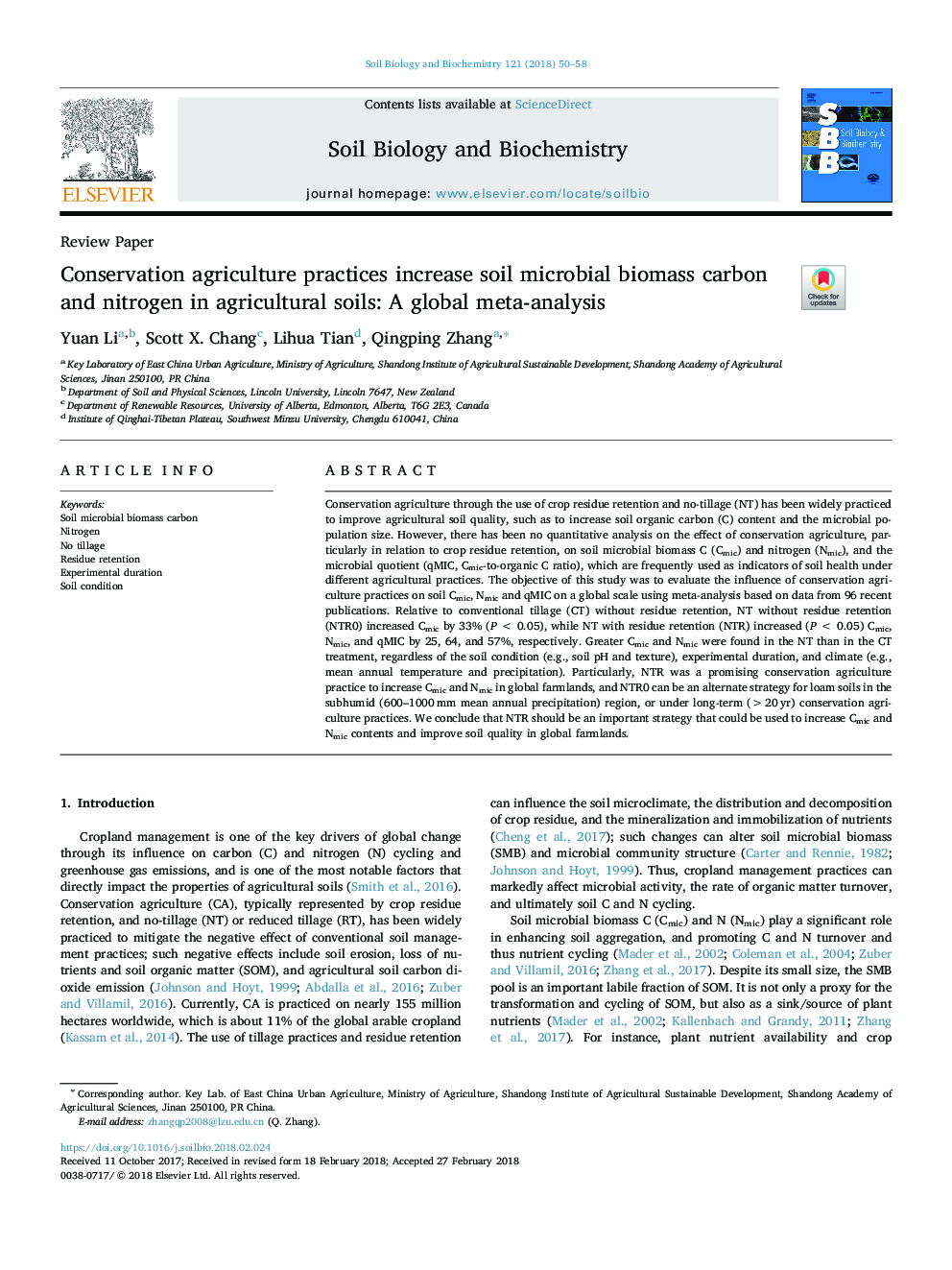| Article ID | Journal | Published Year | Pages | File Type |
|---|---|---|---|---|
| 8362751 | Soil Biology and Biochemistry | 2018 | 9 Pages |
Abstract
Conservation agriculture through the use of crop residue retention and no-tillage (NT) has been widely practiced to improve agricultural soil quality, such as to increase soil organic carbon (C) content and the microbial population size. However, there has been no quantitative analysis on the effect of conservation agriculture, particularly in relation to crop residue retention, on soil microbial biomass C (Cmic) and nitrogen (Nmic), and the microbial quotient (qMIC, Cmic-to-organic C ratio), which are frequently used as indicators of soil health under different agricultural practices. The objective of this study was to evaluate the influence of conservation agriculture practices on soil Cmic, Nmic and qMIC on a global scale using meta-analysis based on data from 96 recent publications. Relative to conventional tillage (CT) without residue retention, NT without residue retention (NTR0) increased Cmic by 33% (Pâ¯<â¯0.05), while NT with residue retention (NTR) increased (Pâ¯<â¯0.05) Cmic, Nmic, and qMIC by 25, 64, and 57%, respectively. Greater Cmic and Nmic were found in the NT than in the CT treatment, regardless of the soil condition (e.g., soil pH and texture), experimental duration, and climate (e.g., mean annual temperature and precipitation). Particularly, NTR was a promising conservation agriculture practice to increase Cmic and Nmic in global farmlands, and NTR0 can be an alternate strategy for loam soils in the subhumid (600-1000â¯mm mean annual precipitation) region, or under long-term (>20â¯yr) conservation agriculture practices. We conclude that NTR should be an important strategy that could be used to increase Cmic and Nmic contents and improve soil quality in global farmlands.
Related Topics
Life Sciences
Agricultural and Biological Sciences
Soil Science
Authors
Yuan Li, Scott X. Chang, Lihua Tian, Qingping Zhang,
